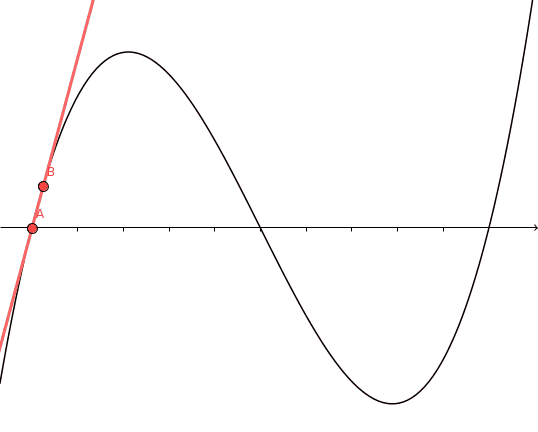How to prove that derivatives have the Intermediate Value Property
This is actually a nice exercise. (In fact, if I recall correctly, it was given as a problem on the very first math exam I took in college. Unfortunately all I was able to say was that it was true if $f'$ was assumed to be continuous, for which I received zero credit.)
Let me set it up a little bit and leave the rest to the interested readers: it is easy to reduce the general case to the following: suppose that $f'(a) > 0$ and $f'(b) < 0$. Then there exists $c \in (a,b)$ with $f'(c) = 0$.
Here's the idea: an interior point with $f'(c) = 0$ is a stationary point of the curve (and conversely!). In particular the derivative will be zero at any interior maximum or minimum of the curve. Recall that since $f$ is differentiable, it is continuous and therefore assumes both a maximum and minimum value on $[a,b]$. So we're set unless both the maximum and minimum are attained at the endpoints. Perhaps the sign conditions of $f'$ at the endpoints have something to do with this...
The result is commonly known as Darboux’s theorem, and the Wikipedia article includes a proof.
A proof without words:

The slope of the secant varies continuously from $f'(a)$ to $f'(b)$, so takes on every value in $[f'(a), f'(b)]$. By the mean value theorem, so does $f'$.
For the details, you can read the original proof by Lars Olsen that this animation is based on. Remarkably, this proof only seems to have been discovered in 2004.